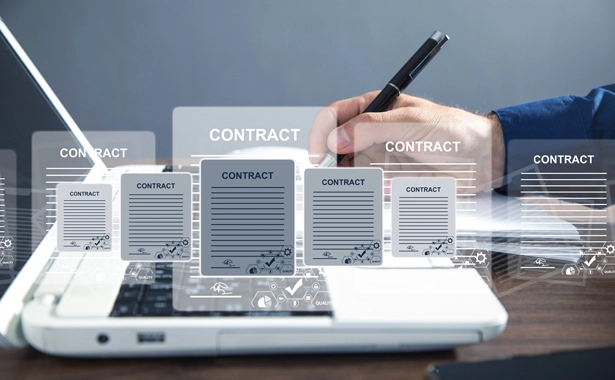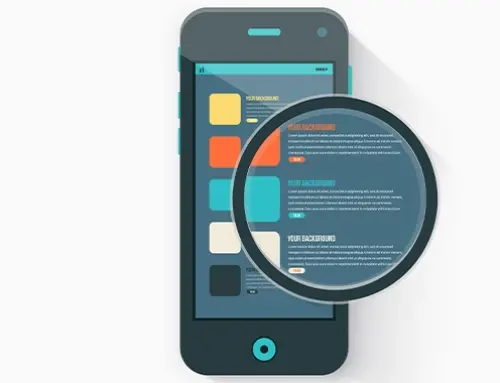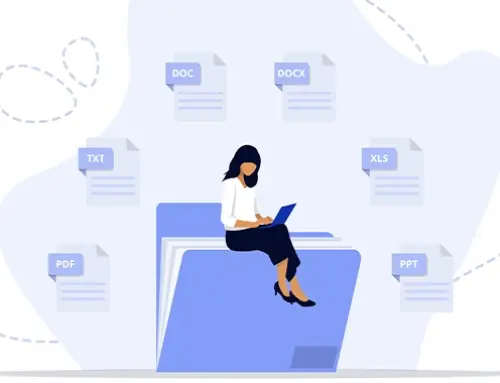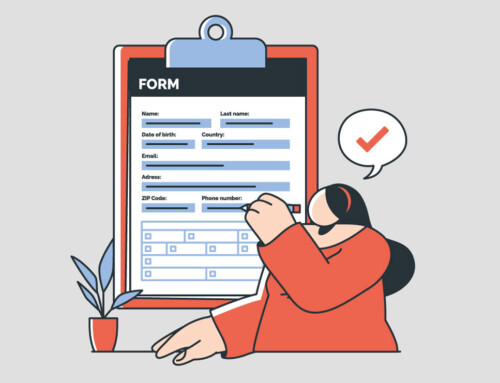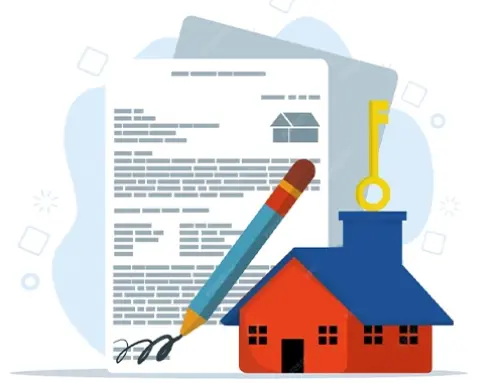Contents
What Is a Software License Agreement?
A software license agreement is a formal contract between you and the software’s maker (the licensor). This agreement outlines the terms and conditions under which you, as the user (the licensee), can use the software. This agreement delineates the specific terms and conditions under which the software can be used, distributed, and managed. A software licence agreement is essential for defining the legal relationship between the software provider and the user. It ensures that both parties understand their rights and responsibilities, thus preventing misuse and protecting the interests of the developer while providing clarity and security to the user. This document is fundamental in the software industry, where intellectual property and the proper use of software products are paramount. Damages provisions are commonly used in license agreements, such as software user licenses. These provisions specify the types and limits of compensation that one party must pay to the other if there is a breach of the agreement. They are designed to protect both parties by clearly defining the financial consequences of non-compliance or misuse. These provisions often include limitations on liability, setting maximum amounts that can be claimed for damages, and exclusions of certain types of damages, like indirect or consequential losses. Including these terms helps mitigate risks and provides a clear framework for resolving potential disputes.
Software Definition
In the context of licensing agreements, “software” refers to a collection of instructions, data, or programs used to operate computers and execute specific tasks. This term encompasses various types of software, including applications, systems software, middleware, and development tools. A software licensing agreement defines the terms under which the software can be used, distributed, and modified. Here are key aspects of software in this context:
Types of Software
Applications are programs designed for end-users to perform specific tasks, such as word processors, spreadsheets, and media players. System software includes operating systems and utilities that manage computer hardware and software resources. Middleware is software that connects different applications or services, facilitating communication and data management. Development tools are software used by developers to create, debug, and maintain other software programs, including IDEs, compilers, and libraries.
Components of Software
Executable files are the binary files that the computer can run to perform tasks. Source code consists of the human-readable instructions written by programmers, which can be compiled into executable files. Documentation includes manuals, help files, and other instructional materials that guide users on how to use the software. Libraries and frameworks are pre-written code that developers can use to build their applications more efficiently.
Software Characteristics in Licensing
Proprietary software is owned by an individual or company and typically restricted in terms of use, modification, and distribution. Open source software has source code that is freely available for anyone to use, modify, and distribute under specific licensing terms. Freeware is available at no cost but may have restrictions on usage and distribution. Shareware is distributed on a trial basis, often with limited functionality or for a limited time, with the expectation of payment for full use.
Rights and Restrictions
Usage rights specify how the software can be used, whether for personal, commercial, or educational purposes. Modification rights define whether the user can alter the software’s source code. Distribution rights outline the conditions under which the software can be shared or redistributed. Reverse engineering, often prohibited, refers to analyzing the software to recreate its source code or understand its structure.
Licensing Models
A perpetual license allows the user to use the software indefinitely after a one-time purchase. A subscription license provides access to the software for a specified period, usually requiring periodic payments. A concurrent user license permits a specified number of users to access the software simultaneously. A site license allows the software to be used on multiple computers within a single location or organization.
Maintenance and Support
Updates are enhancements or bug fixes provided to improve the software. Upgrades are new versions of the software that may offer significant new features or improvements. Technical support is assistance provided to help users resolve issues related to the software.
Intellectual Property Protection
Copyright offers legal protection for the original works of authorship, including software code. Patents protect specific inventions or processes within the software. Trademarks protect the branding and logos associated with the software.
Overall, within the context of licensing agreements, “software” is broadly defined to include all executable code, source code, and related materials, along with specific rights, restrictions, and protections to ensure proper use and distribution.
Different Types of Software Licensing Agreements
Software licensing agreements come in various forms, each tailored to different needs and use cases. Here are some of the most common types of software licensing agreements:
End-User License Agreement (EULA)
An End-User License Agreement (EULA) is a contract between the software developer or vendor and the end user. It specifies how the software can be used and the restrictions on its use. EULAs are common for commercial software, applications, and games. They typically include non-transferable licenses, limits on copying and modifying the software, and prohibitions on reverse engineering.
Open-Source License
Open-source licenses allow users to freely use, modify, and distribute the software. These licenses promote collaborative development and sharing. Commonly used for community-driven projects and software development frameworks, open source licenses include the MIT License, GNU General Public License (GPL), and Apache License. Key features of open source licenses include free redistribution, access to source code, and rights to modify and create derivative works.
Proprietary License
A proprietary license restricts the use, modification, and distribution of the software. The software remains the property of the licensor, and users typically pay for the right to use it. This type of license is common for commercial software and enterprise solutions. Proprietary licenses often include restricted use and distribution, no access to source code, and a fee for usage.
Site License
A site license allows an organization to install and use the software on multiple computers within a single location or across multiple locations. Commonly used by large organizations and educational institutions, site licenses allow multiple installations but are typically limited to a specific geographical location and may include a fixed number of users or devices.
Enterprise License
An enterprise license provides broad rights to use the software across an entire organization, often with flexible terms tailored to the organization’s needs. Used by large corporations and multinational companies, enterprise licenses offer wide-ranging usage rights, often include support and maintenance, and are scalable according to organizational size.
Academic License
Academic licenses are designed for educational institutions and students, providing access to software for educational and research purposes at a reduced cost or for free. These licenses are common in schools, universities, and research institutions. They typically offer reduced pricing or free access, restrict usage to educational purposes, and often include access to additional resources for learning.
Subscription License
Subscription licenses provide access to the software for a specific period, typically on a monthly or annual basis. Users must renew the subscription to continue using the software. This type of license is common for cloud-based software and Software as a Service (SaaS) offerings. Subscription licenses often include regular updates and support and require renewal for continued use.
Trial License
A trial license allows users to use the software for a limited time or with limited features, providing a way to evaluate the software before making a purchase. Commonly used for software marketing and user trials, trial licenses usually come at no cost for the trial period and convert to a paid license upon expiration or upgrade.
Perpetual License
A perpetual license allows the user to use the software indefinitely after a one-time purchase. This type of license does not require renewal but may have optional maintenance fees. Perpetual licenses are common for desktop applications and legacy software. They involve a one-time purchase, unlimited duration of use, and optional maintenance and support fees.
Concurrent User License
A concurrent user license allows a specified number of users to use the software simultaneously. The total number of users can exceed the number of licenses, but only the licensed number can be active at any time. This type of license is common in networked environments and shared workspaces, offering a cost-effective solution for environments with multiple users and varying usage patterns.
Each type of software licensing agreement has its own benefits and is suited to different scenarios, depending on factors like the number of users, the nature of the software, and the specific needs of the organization or individual using the software.
Purposes of Software Licensing Agreements
Software licensing agreements serve several critical purposes, ensuring both the protection of the software developer’s intellectual property and the proper use of the software by the end user. Software licensing agreements protect the intellectual property rights of software developers by clearly stating that the software remains the property of the licensor, preventing unauthorized copying, modification, and distribution.
They define the scope of software use, specifying whether licenses are perpetual or time-limited, single-user or multi-user, and for personal, commercial, or educational purposes. These agreements impose restrictions to prevent misuse, such as prohibiting reverse engineering, and outline financial terms including costs, payment schedules, and additional fees for services like updates and support.
Software licensing agreements detail the support and maintenance services provided, including their duration and any additional costs. Licensing agreements limit the licensor’s liability, often including disclaimers of warranties and caps on damages. They specify conditions for license termination, such as breaches of terms, and outline the consequences, including the obligation to cease using and destroy the software. Confidentiality clauses safeguard proprietary information, while provisions for governing law and dispute resolution ensure legal issues are handled clearly. Overall, these agreements facilitate compliance and control over software use, preventing illegal distribution and ensuring the software is used according to the licensor’s policies and legal requirements.
Key Components and Considerations of a Software License Agreement
License Grant
The license grant specifies the scope of the license, such as whether it is a perpetual license, subscription-based, or a limited-term license. It also defines the permitted uses of the software, which could include personal, commercial, or educational purposes.
Restrictions
Restrictions list prohibitions on actions such as modifying, reverse engineering, or redistributing the software without permission. They may also limit the number of installations or devices on which the software can be used.
Intellectual Property Rights
This section clarifies that the software is protected by intellectual property laws and remains the property of the licensor. It outlines any rights the user has to the software, which are often limited to usage rather than ownership.
Support and Maintenance
Details in this section explain whether the licensor will provide support, updates, and maintenance services, and for how long these services will be available. It also specifies if these services are included in the initial purchase or require additional fees.
Warranties and Disclaimers
This part describes any warranties provided with the software, such as performance guarantees. It often includes disclaimers of warranties, limiting the liability of the licensor for issues like bugs or security vulnerabilities.
Liability Limitation
Liability limitation restricts the licensor’s liability in case of damages arising from the use of the software. It defines the maximum amount the licensor can be held responsible for in case of legal disputes.
Termination
The termination section explains the conditions under which the license can be terminated, such as violation of the agreement terms. It also describes the consequences of termination, including the obligation to cease using and possibly destroy copies of the software.
Governing Law and Dispute Resolution
This section specifies the jurisdiction and legal framework that will govern any disputes arising from the agreement. It may include provisions for arbitration or mediation as methods of dispute resolution.
Payment Terms
Payment terms outline the cost of the license, the payment schedule, and any additional fees for services like updates or support.
Confidentiality
Confidentiality obligates the user to keep any proprietary information related to the software confidential.
Key Considerations for Evaluating a Software License Agreement
When evaluating a software license agreement, it is crucial to thoroughly review several critical aspects to ensure that your rights and obligations are clearly defined, and that the agreement aligns with your needs.
Examine any restrictions imposed by the license. Common prohibitions include modifying, reverse engineering, decompiling, or redistributing the software. Ensure these restrictions are clearly specified and acceptable for your intended use.
Determine the legal jurisdiction governing the agreement and the methods for dispute resolution. The agreement may include provisions for arbitration or mediation, ensuring both parties understand how legal issues will be managed.
Confirm that the agreement sets clear terms and conditions for compliance and control over software use. This helps prevent illegal distribution and usage, ensuring the software is used according to the licensor’s policies and legal requirements.
Understanding How a Software Licensing Agreement Works
A Software Licensing Agreement works by establishing the terms and conditions under which a user (licensee) can access, use, and distribute software provided by the developer or vendor (licensor). The process typically begins with the negotiation and drafting of the agreement’s terms between the licensor and licensee. This agreement can be a standard form or customized to meet specific requirements, especially in business-to-business or enterprise scenarios. Once the terms are finalized, the licensee must accept them, which may involve signing a contract or, in the case of consumer software, clicking “I Agree” during the installation process. This acceptance formalizes the agreement and allows the licensee to legally use the software as specified.
The Importance of Understanding Software Licensing Agreements
Understanding Software Licensing Agreements is crucial for several reasons. By offering licenses for your software instead of selling it outright, you retain full ownership rights, giving you greater control over its usage and distribution. Licensing allows you to impose restrictions on how the software is used, enabling you to generate ongoing revenue by licensing it to multiple users. Without a signed agreement, customers could potentially replicate or copy your software for their benefit, resulting in financial losses and unfair competition.
A software license contract safeguards against such abuse, ensuring that your business interests are protected. It is crucial to limit your liability as a software developer to mitigate the risk of lawsuits. Including liability limitation clauses in the license agreement protects you from legal disputes arising from software-related issues, provided the liability clause is fair to both parties involved.
Customers may have unrealistic expectations about the software’s performance, potentially leading to warranty claims. Including disclaimers of warranties in the agreement can protect you from such claims by requiring users to accept the software as-is, reducing the risk of being held responsible for unforeseen issues or downtime.
Additionally, a software license contract should grant you the ability to revoke or suspend licenses at any time and for any reason, enabling you to maintain complete control over your software. If the need arises to terminate a license, referring customers to the relevant clause in the agreement helps resolve any disputes.
Negotiating a Software Licensing Agreement
Negotiating a software licensing agreement requires careful preparation, clear communication, and a strategic approach to ensure that both parties’ needs and interests are met. Here are the steps to effectively negotiate a software licensing agreement:
- Prepare Thoroughly
Before entering negotiations, gather all relevant information about the software, including its features, benefits, and potential limitations. Understand your organization’s needs and objectives, as well as the licensing terms that are critical for your business operations. Familiarize yourself with standard industry practices and comparable agreements.
- Identify Key Terms and Priorities
Identify the key terms that are most important to your organization. These may include:
- License Scope: Define the type of license, number of users, and permitted uses.
- Pricing and Payment Terms: Determine acceptable costs, payment schedules, and potential discounts.
- Support and Maintenance: Clarify the level of support, update frequency, and maintenance services required.
- Restrictions and Prohibitions: Understand any restrictions on modifying, reverse engineering, or redistributing the software.
- Liability and Warranties: Ensure adequate protections and limitations of liability.
- Open Communication
Start the negotiation with an open and collaborative approach. Clearly communicate your organization’s needs and priorities. Be transparent about what you are seeking in the agreement and listen carefully to the licensor’s terms and conditions. Establishing a cooperative atmosphere can lead to a more productive negotiation.
- Negotiate Flexibility
Seek flexibility in the terms of the agreement to accommodate your organization’s specific needs, which might include requesting modifications to the software to better fit your use case, ensuring the license can scale with your organization’s growth, and negotiating a trial period to evaluate the software before committing to a long-term license.
- Discuss Intellectual Property Rights
Clarify the ownership of intellectual property and the extent of rights granted to your organization. Ensure that the agreement explicitly states that the software remains the property of the licensor, but also seeks any necessary usage rights for your operations.
- Review Payment Structures
Negotiate payment structures that align with your budget and cash flow. Consider whether to pay the full license fee upfront or in installments, and request discounts for longer-term commitments or bulk licenses. Additionally, clarify any extra fees for support, updates, or maintenance to ensure that all financial obligations are transparent and manageable.
- Ensure Adequate Support and Maintenance
Negotiate the terms of support and maintenance to ensure that your organization will receive the necessary assistance. Specify the duration of support, types of services provided, and any additional costs involved. Make sure the agreement includes clear response times and service levels.
- Address Liability and Warranties
Ensure that the agreement includes appropriate warranties and limitations of liability. Negotiate terms that provide protection for your organization in case of software defects, performance issues, or security vulnerabilities. Seek to cap the licensor’s liability at a reasonable level.
- Include Termination Clauses
Discuss the conditions under which the license can be terminated. Ensure that there are clear terms for termination due to breaches of the agreement, non-payment, or other specific conditions. Clarify the consequences of termination, including the requirement to cease using and destroy all copies of the software.
- Incorporate Confidentiality Provisions
Negotiate confidentiality clauses to protect any proprietary information shared during the use of the software. Ensure that both parties are obligated to safeguard sensitive information and trade secrets.
- Seek Legal Advice
Consult with legal experts to review the draft agreement. Their expertise can help identify potential issues, ensure compliance with relevant laws, and refine the agreement to protect your interests.
- Document the Agreement
Once all terms are agreed upon, ensure that the final agreement is documented in writing. Review the document thoroughly to confirm that all negotiated terms are accurately reflected. Both parties should sign the agreement to formalize it.
By following these steps, you can effectively negotiate a software licensing agreement that meets your organization’s needs, protects your interests, and fosters a positive relationship with the licensor.
What Is a Basic Restriction Found in Software Licensing?
A basic restriction commonly found in software licensing agreements is the prohibition against modifying, reverse engineering, decompiling, or disassembling the software. This restriction is designed to protect the intellectual property and proprietary technology of the software developer by preventing users from accessing and altering the underlying source code. This helps maintain the integrity and security of the software, ensuring that it is used only as intended by the developer.
- Purpose of the Restriction
The primary purpose of this restriction is to safeguard the developer’s intellectual property. Software development often involves significant investment in terms of time, effort, and resources. By restricting modification and reverse engineering, the developer can protect their competitive edge and prevent unauthorized use or duplication of their work. This is particularly crucial for proprietary software, where the source code contains unique algorithms, design structures, and other elements that constitute trade secrets.
- Ensuring Software Integrity
Prohibiting modifications helps maintain the integrity of the software. Unauthorized changes can introduce vulnerabilities, bugs, or incompatibilities that can affect the performance and security of the software. By restricting users from altering the code, developers ensure that the software functions as intended and provides a consistent user experience.
- Preventing Unauthorized Redistribution
These restrictions also prevent unauthorized redistribution of the software. Users who modify or reverse engineer the software could potentially create derivative works or distribute unauthorized copies, undermining the developer’s control over their product. This can lead to lost revenue and reduced market share for the original developer.
- Legal and Compliance Considerations
From a legal standpoint, these restrictions help enforce compliance with licensing terms. By clearly stating what users can and cannot do with the software, developers create a legal framework that supports enforcement actions against violations. This clarity is essential in protecting the developer’s rights and providing a basis for legal recourse if the terms are breached.
- Protecting Against Malware and Security Risks
Allowing users to modify or decompile software increases the risk of introducing malware or other security threats. Unauthorized modifications can create backdoors or vulnerabilities that malicious actors can exploit. By enforcing these restrictions, developers can better control the security environment of their software, protecting both their intellectual property and their users.
- Limiting Technical Support Issues
When users modify software, it can lead to unexpected behavior and technical issues that the original developer is not responsible for. These issues can increase the burden on technical support teams and lead to dissatisfaction among users. By prohibiting modifications, developers can ensure that any support issues are related to the official, unaltered version of the software, making it easier to provide effective assistance.
In summary, the prohibition against modifying, reverse engineering, decompiling, or disassembling software is a fundamental restriction in software licensing agreements. It serves to protect the developer’s intellectual property, maintain software integrity and security, prevent unauthorized redistribution, support legal enforcement, mitigate security risks, and limit technical support challenges. These restrictions are crucial for ensuring that the software is used in a manner consistent with the developer’s intentions and legal rights.
Standard Software License Agreement
This Software License Agreement (“Agreement”) is made and entered into by and between [Licensor’s Name], with a principal place of business at [Licensor’s Address] (“Licensor”), and [Licensee’s Name], with a principal place of business at [Licensee’s Address] (“Licensee”).
- Grant of License
1.1 License: Subject to the terms and conditions of this Agreement, Licensor grants Licensee a non-exclusive, non-transferable, limited license to use the software (“Software”) described in Exhibit A, solely for Licensee’s internal business purposes.
1.2 Scope: This license allows the Software to be installed on up to [number] devices for use by [number] users. The Software may be used for [personal/commercial/educational] purposes.
- Restrictions
2.1 Prohibited Actions: Licensee shall not modify, reverse engineer, decompile, or disassemble the Software.
2.2 Distribution: Licensee shall not distribute, sublicense, lease, rent, or loan the Software to any third party.
2.3 Copying: Licensee may make one backup copy of the Software, provided that such copy is used solely for archival purposes and retains all proprietary notices as contained in the original Software.
- Intellectual Property Rights
3.1 Ownership: The Software is protected by copyright laws and international copyright treaties, as well as other intellectual property laws and treaties. Licensor retains all rights, title, and interest in and to the Software, including all intellectual property rights therein.
- Payment Terms
4.1 License Fee: Licensee shall pay Licensor a license fee of [amount] upon execution of this Agreement.
4.2 Additional Fees: Any additional services such as updates, support, or maintenance will be provided for an additional fee as described in Exhibit B.
- Support and Maintenance
5.1 Support: Licensor agrees to provide technical support for the Software as described in Exhibit C for a period of [duration].
5.2 Updates: Licensor will provide updates to the Software as they become available during the support period.
- Warranties and Disclaimers
6.1 Limited Warranty: Licensor warrants that the Software will substantially conform to the documentation provided for a period of [duration] from the date of receipt.
6.2 Disclaimer: Except for the limited warranty set forth above, the Software is provided “as is” and Licensor disclaims all other warranties, whether express, implied, or statutory, including, but not limited to, any implied warranties of merchantability, fitness for a particular purpose, or non-infringement.
- Limitation of Liability
7.1 Limitation: In no event shall Licensor be liable for any indirect, incidental, special, consequential, or punitive damages, including but not limited to loss of profits, data, or use, whether in an action in contract, tort, or otherwise, arising out of or in connection with the use or performance of the Software.
7.2 Cap: Licensor’s total liability for any damages under this Agreement shall not exceed the amount paid by Licensee for the Software.
- Termination
8.1 Termination for Breach: Licensor may terminate this Agreement immediately upon written notice to Licensee if Licensee breaches any term of this Agreement.
8.2 Effect of Termination: Upon termination, Licensee shall immediately cease using and destroy all copies of the Software.
- Confidentiality
9.1 Confidential Information: The licensee agrees to maintain the confidentiality of all proprietary information and trade secrets related to the Software.
- Governing Law and Dispute Resolution
10.1 Governing Law: This Agreement shall be governed by and construed in accordance with the laws of [State/Country].
10.2 Dispute Resolution: Any disputes arising out of or in connection with this Agreement shall be resolved through [arbitration/mediation] in [Location].
- Miscellaneous
11.1 Entire Agreement: This Agreement constitutes the entire agreement between the parties and supersedes all prior or contemporaneous agreements or representations, written or oral, concerning its subject matter.
11.2 Amendments: Any modifications or amendments to this Agreement must be in writing and signed by both parties.
11.3 Severability: If any provision of this Agreement is found to be invalid or unenforceable, the remaining provisions will continue in full force and effect.
11.4 Notices: Any notices required under this Agreement shall be provided to the other party in writing at the addresses specified above.
IN WITNESS WHEREOF, the parties have executed this Software License Agreement as of the date first written above.
[Licensor’s Name] By: ___________________________ Name: Title: Date: [Licensee’s Name] By: ___________________________ Name: Title: Date:
Conclusion
In conclusion, a software license agreement is a critical legal document that establishes the terms and conditions under which a user can utilize software. It is essential for defining the legal relationship between the software provider and the user, ensuring that both parties understand their rights and responsibilities. This agreement protects the developer’s intellectual property, prevents misuse, and provides clarity and security to the user. By delineating usage rights, restrictions, liability limitations, and support provisions, software license agreements help mitigate risks and facilitate compliance, ultimately fostering a secure and mutually beneficial environment for both developers and users. Understanding and negotiating these agreements effectively is crucial for any organization or individual involved in the software industry, as it ensures the proper use and distribution of software products while safeguarding the interests of all parties involved.
Frequently Asked Questions
1.What is a License Agreement for software?
A License Agreement for software is a legal contract between the software developer or vendor (the licensor) and the user (the licensee) that defines how the software can be used, distributed, and accessed. This agreement outlines the rights and responsibilities of both parties and is intended to protect the intellectual property of the software developer while providing the user with specific permissions to use the software.
2.What Does a Software End-User License Agreement Indicate?
A Software End-User License Agreement (EULA) indicates the terms and conditions under which the end user can use the software. It outlines the user’s rights and limitations regarding the use, distribution, and modification of the software. The EULA specifies the scope of the license, such as whether it is perpetual or time-limited, and details any restrictions, such as prohibiting reverse engineering or redistribution. It also covers issues related to intellectual property, support and maintenance, warranties, liability limitations, and termination conditions. Essentially, the EULA serves as a legal contract between the software developer (licensor) and the user (licensee), ensuring that both parties understand their rights and obligations.
3.Where Should a Software Licensing Agreement Be Displayed?
A software licensing agreement should be prominently displayed at key points during the user’s interaction with the software to ensure that it is read and accepted. During installation, present the agreement to the user. Users should be required to read and accept the terms before the installation can proceed. This ensures that the agreement is acknowledged before the software is used.
On the software’s official website, make the agreement available, preferably on the download or purchase page. This allows potential users to review the terms before acquiring the software, ensuring transparency and informed consent. Within the software, include the agreement itself, accessible through the help menu or settings. This allows users to reference the terms at any time during use, providing easy access to important information.
In the documentation, include the agreement in the user manual or any accompanying materials. This provides a written record that users can consult offline, ensuring that the terms are always accessible. On purchase confirmation, if the software is sold online, include a link to the agreement in the purchase confirmation email or on the confirmation page. This gives users another opportunity to review the terms after their purchase.
4.What distinguishes an End-User License Agreement (EULA) from a Software Licensing Agreement?
An End-User License Agreement (EULA) is a specific type of Software Licensing Agreement. A EULA typically focuses on the relationship between the software developer (licensor) and the individual end-user (licensee), granting the end-user specific rights to use the software under certain conditions. In contrast, a Software Licensing Agreement is a broader term that encompasses various types of agreements, including EULAs. It can apply to different scenarios such as business-to-business licensing, enterprise licensing, and other arrangements beyond just individual end-users. A EULA is primarily aimed at individual consumers who purchase or download software for personal or specific use, while a Software Licensing Agreement can be designed for a wider range of users, including corporations, educational institutions, government agencies, and other organizations, in addition to individual consumers. EULAs are generally simpler and more standardized, often presented as a click-through agreement during software installation. In contrast, Software Licensing Agreements can be more complex and tailored to the specific needs of the licensor and licensee, with detailed terms covering various aspects such as deployment, support, maintenance, and compliance. EULAs usually offer limited customization, with terms and conditions set by the software provider. However, Software Licensing Agreements are often customizable, allowing for negotiation between the licensor and licensee to meet specific requirements and preferences. In essence, while a EULA is a type of Software Licensing Agreement specifically for end-users, a Software Licensing Agreement is a more general term that includes a variety of licensing arrangements for different types of users and use cases.
Disclaimer: The content provided on this blog is for informational purposes only and does not constitute legal, financial, or professional advice.
